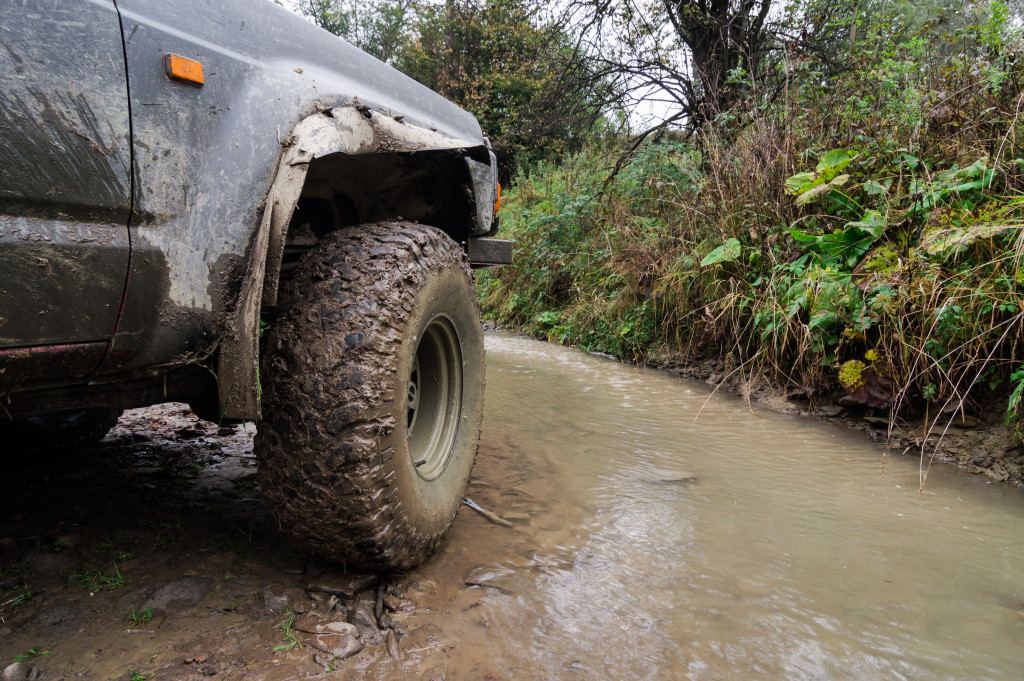Whether you’re driving through the desert, the mountains, or the tundra, it’s essential to take steps to protect your car from the elements. Harsh conditions can take a toll on your vehicle, and if you’re not careful, you could find yourself stranded in the middle of nowhere with a broken-down car. Here are a few tips to help you protect your vehicle when driving in harsh conditions:
Check your tire pressure regularly
When driving through challenging terrain and inclement weather, keeping an eye on your tires is essential. Make sure you check your tire pressure regularly – before each leg of your journey, if possible. Underinflated tires can lead to a blowout, and that’s the last thing you want.
You should also inspect your tires for any damage, including cracks or bulges in the sidewalls. If you see any damage, get the tire repaired or replaced before continuing your trip. With some care, you can ensure that your tires will get you where you’re going – safely and without incident.
Change your oil regularly
Any time you’re planning a road trip, especially one that will take you through some harsh terrain and weather, it’s essential to ensure your car is in good condition. That means changing your oil regularly. Not only will this help to keep your engine running smoothly, but it will also protect it from the build-up of dirt and debris.
If you’re not sure when the last time your oil was changed, it’s best to stay on the side of caution and get it done before you hit the road. You don’t want to be lost in a harsh environment with a broken-down car. So, before you head out on your next adventure, make sure to change your oil. It could save you a lot of headaches (and money) down the line.
Make sure your breaks are in top condition
Brakes going out is a nightmare for any driver, especially if you’re driving through harsh environments. That’s why it’s essential to make sure your brakes are in top condition before you hit the road. First, check your brake fluid level and ensure that it’s full. Next, inspect your brake pads and rotors for any signs of wear or damage. If they look worn, replace them with new ones. Finally, take your car to a mechanic and have them give it a thorough inspection to ensure that everything is in good working order.
Taking these simple precautions can help ensure that your brakes will be up for the challenge – no matter what terrain or weather you encounter on your journey.
Have ceramic coating applied on your car
When you’re on a road trip through harsh terrain and weather, you need to know your car can handle it. That’s why having a ceramic coating on your vehicle is so essential. Ceramic coating provides an extra layer of protection against the elements, keeping your car looking its best. It also helps to protect your paint from fading and chipping.
And, if you ever get caught in a storm or accident, ceramic coating can help prevent further damage to your car. So, if you’re planning a trip through tough terrain and weather, have a ceramic coating on your car. It could mean the difference between a smooth journey and a disaster.
Pack an emergency kit
No one wants to think about being stranded in the middle of nowhere, but it’s always better to be prepared. Pack an emergency kit if you’re planning a trip through harsh terrain or severe weather. At a minimum, your kit should include water, food, a first-aid kit, a flashlight, and a way to signal for help. Pack additional supplies like a map and compass, extra clothing, and a fire starter if you can.
And don’t forget your cellphone! Even if you’re going off the grid, it’s always good to have a way to call for help in an emergency. By being prepared, you can ensure that your trip is safe and enjoyable – no matter what mother nature throws your way.
Drive cautiously

It’s essential to take extra caution when driving, especially in bad conditions. Make sure you know the conditions before you set out, and plan your route accordingly. Once you’re on the road, take things slowly and be prepared for the unexpected. Watch out for slippery spots, loose rocks, and other potential hazards. And if the weather is worse, don’t hesitate to turn back or seek shelter. You can help ensure a safe and enjoyable trip by taking simple precautions.
Once again, remember to check your tire pressure regularly, change your oil frequently if necessary, ensure your breaks are working well, apply a ceramic coating on your car, pack an emergency kit, and drive cautiously. Taking these precautions can help ensure that your car stays safe during even the most challenging journeys.
